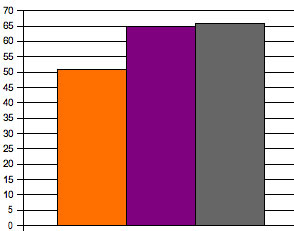We are pretty much stranded today because of heavy snow. The Super Bowl will occupy my time later this afternoon, but I took the time this morning to read the most recent Kaiser Foundation Generation M study. The national survey study has been conducted every 5 years to track media use among 8-18 year olds.
There are interesting data about just how much media young people consume, but I was most interested in the relationships between media consumption, academic performance, and psychopathology. The categories are crude (heavy, moderate, light media consumers; % earning mostly As and Bs), but those who consume more media tended to have lower grades and to exhibit more psychopathology. Certainly, one must be careful in jumping to conclusions about causal relationships (I tell my students this all of the time), but the relationships would be difficult to describe as desirable no matter what the direction or what additional variables were included as part of the explanation.

The authors generated these relationships for different media and the one media type showing a positive relationship was print. Young people who engage in more recreational reading seem to do better academically. The opposite appeared to be the case for television viewing, games, etc.
One of the other “hidden” issues in this study is the decline of recreational exposure to print media. In the ten years since the first study was conducted print media consumption has dropped from 43 to 38 minutes per day. Online print consumption does not make up for the decline in newspaper, magazine and book reading.
These trends and the relationship to academic performance parallel many of the issues raised in Bauerlein’s Dumbest Generation.
I see such findings as a challenge. For those who argue the benefits of games (e.g., Gee, Prensky), what is the counter argument? Hours on new media are increasing and the totals accumulated relate negatively to academic performance.

Powered by ScribeFire.
![]()
One thought on “Inputs and Outputs”